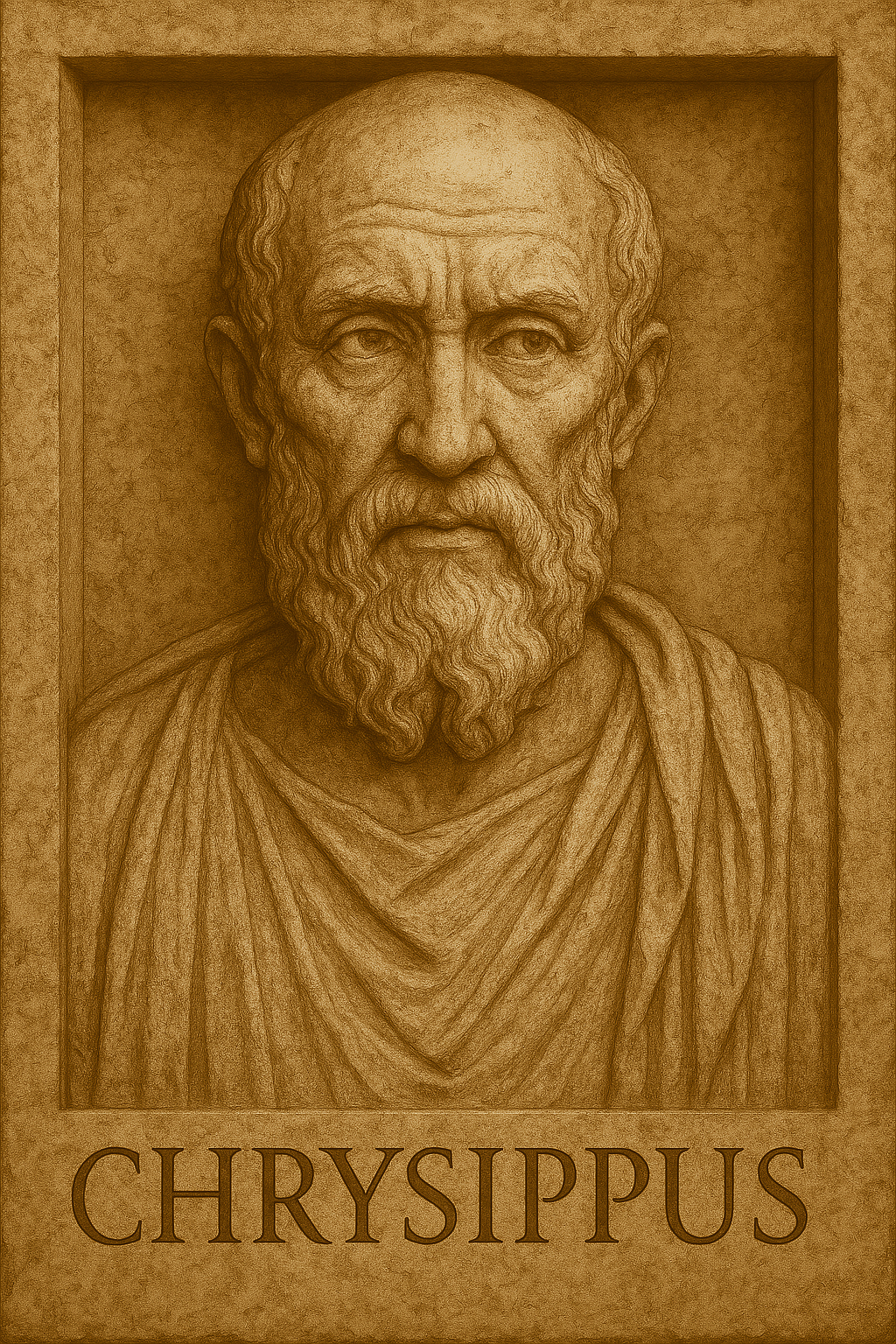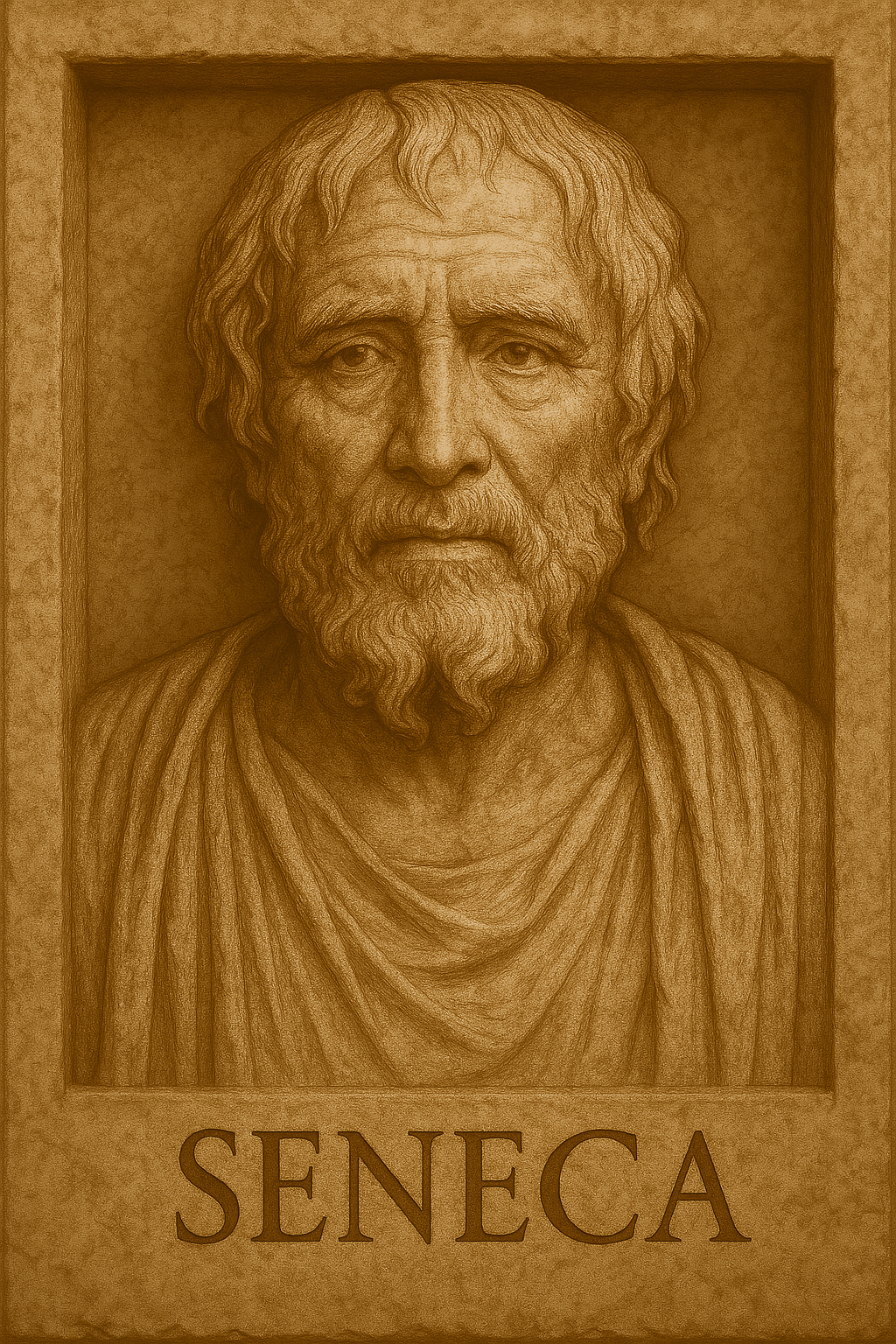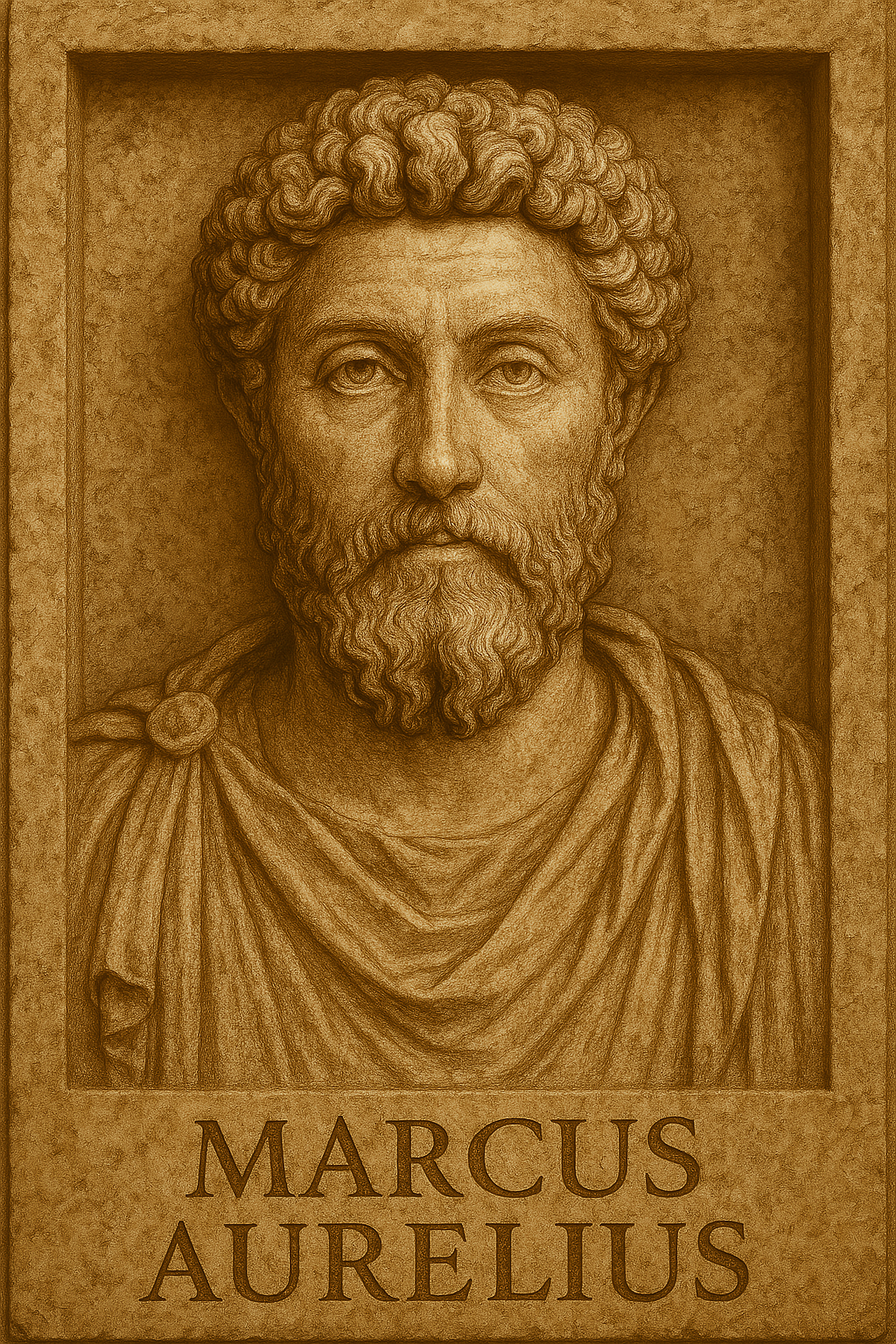History of Stoicism
Zeno of Citium
Zeno of Citium was a philosopher from the ancient city of Citium (modern-day Cyprus). He was curious and deeply interested in understanding how to live a good and meaningful life.
From Rich to Poor
Originally wealthy, Zeno lost everything when his ship was wrecked during a storm. This sudden loss forced him to start over with nothing in Athens, changing the course of his life forever.
Start of Stoicism
In Athens, Zeno began studying philosophy and teaching at the Stoa Poikile (the Painted Porch). His teachings focused on living with virtue, reason, and inner strength—forming the foundation of the Stoic philosophy still influential today.
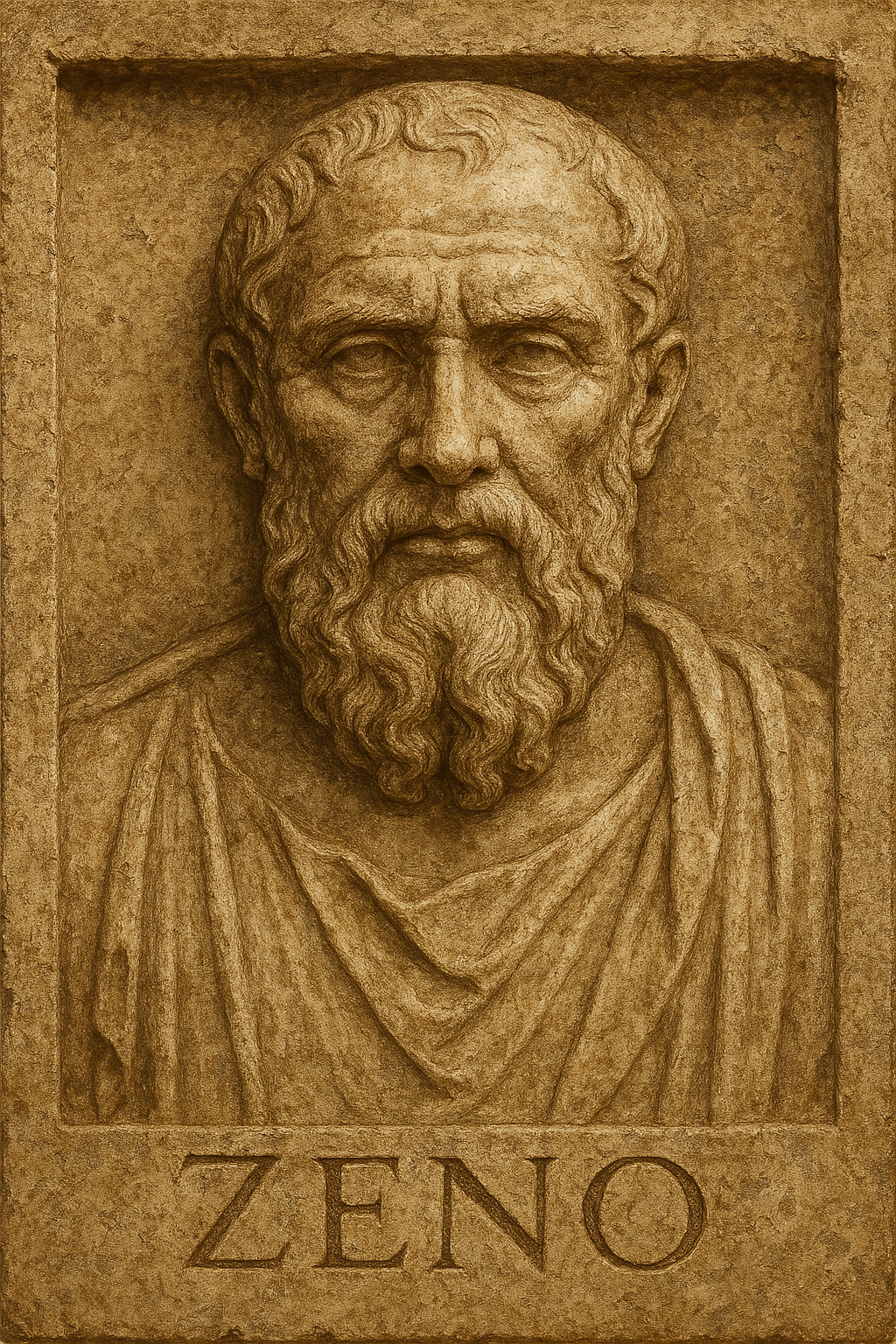
The Stoa Poikile
Located on the north side of the Athenian Agora, the Stoa Poikile—or “Painted Stoa”—was one of the most iconic structures of ancient Athens. Built in the 5th century BCE, it was more than just a marketplace colonnade; it was a space where art, philosophy, and public life converged.
The Stoa earned its name from the vibrant frescoes that adorned its interior walls. These murals depicted famous battles and mythological scenes, including the legendary Battle of Marathon, celebrating the valor and victories of the Athenian people. Created by renowned artists like Polygnotus, the paintings made the Stoa Poikile not only a place of shelter and commerce but also a gallery of civic pride and cultural memory.
Perhaps most famously, the Stoa Poikile became the symbolic birthplace of Stoicism, one of the most enduring schools of ancient philosophy. It was here that the philosopher Zeno of Citium began teaching around 300 BCE, attracting followers who were inspired by his emphasis on virtue, reason, and self-control. The very word “Stoicism” derives from this structure—the “Stoa.”
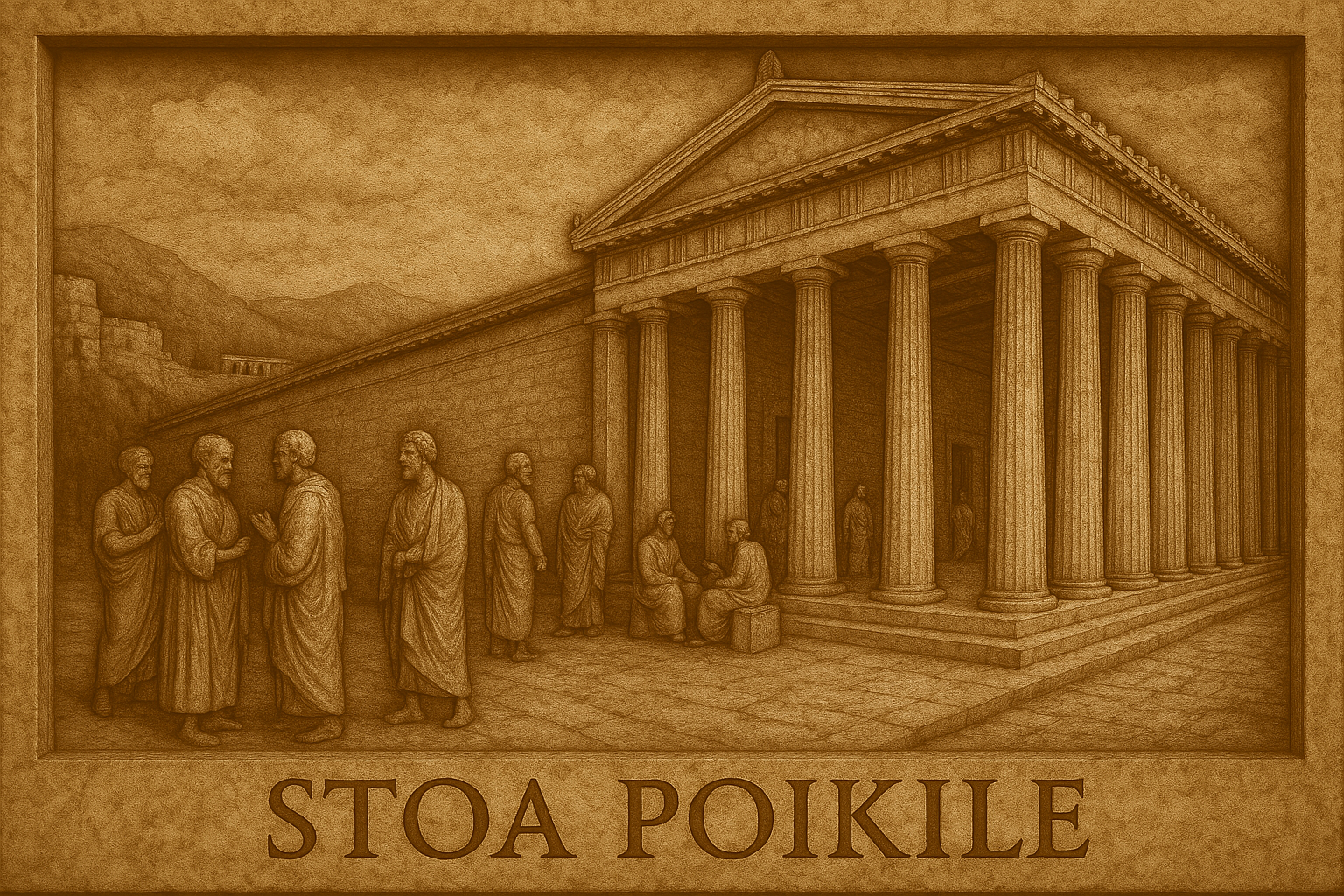
Important Stoa’s
Zeno of Citium (c. 334–262 BCE) was not born a philosopher. He began his life as a wealthy Phoenician merchant from the city of Citium, on the island of Cyprus. His journey toward wisdom started unexpectedly—with disaster. During a voyage, his ship was wrecked and all his cargo lost. Alone and penniless, Zeno arrived in Athens, the intellectual heart of the ancient world.
According to legend, Zeno stumbled into a bookshop and began reading about Socrates. Struck by the philosopher’s dedication to truth and virtue, Zeno asked the shopkeeper where he might find men like Socrates. He was directed to Crates of Thebes, the most famous Cynic philosopher of the time. Crates became Zeno’s first teacher.
Zeno went on to study under multiple philosophers of different schools, including the Cynics, Megarians, and Academics. But he didn’t fully align with any of them. Drawing on these influences, he eventually developed his own philosophy—one grounded in logic, ethics, and physics—and began teaching it at the Stoa Poikile, or “Painted Porch,” in Athens. His followers came to be known as Stoics, after the Stoa itself.
At the heart of Zeno’s Stoicism was a simple yet powerful idea: live in accordance with nature and reason. He believed that the path to true happiness was not found in wealth, pleasure, or status, but in virtue—in living a life of wisdom, courage, self-discipline, and justice. For Zeno, external events were beyond our control, but our responses to them were entirely up to us. This was the essence of freedom.
Zeno’s life reflected his teachings. Known for his modesty, self-control, and resilience, he earned the respect of Athenians and even declined monetary rewards for his instruction. He lived simply, and by all accounts, he practiced what he preached.
Zeno’s impact was profound. Although none of his original writings have survived, his ideas laid the foundation for a school of thought that would influence generations—most notably Chrysippus, who systematized Stoic doctrine, and later Roman Stoics like Seneca and Marcus Aurelius.
Zeno died around 262 BCE, reportedly by his own choice, after a minor injury led him to believe his time had come. True to Stoic principles, he met death with calm acceptance, as just another event in the natural order of life.


